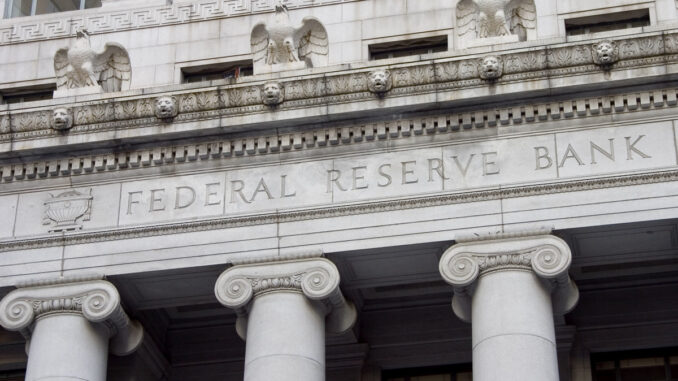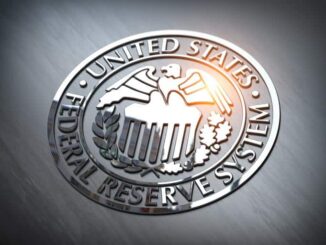
The Federal Reserve‘s (Fed) interest rate hike pause will give the housing industry a cautious sigh of relief, but observers are already nervous that the rate-induced pain train won’t come to a complete stop for a while longer and volatility will remain.
The Fed’s updated economic projections showed that central bankers forecast that inflation could finish 2023 at 3.2% up from March’s projection at 3.3%; core PCE inflation at 3.9% after stripping out food and fuel prices, an increase from March’s projection of 3.6%; the unemployment rate to rise to 4.1% by the year-end, a drop from the projected 4.5% in March; and real GDP has been revised higher to 1% from March’s projection of 0.4%
Bond yields and inflation moved more from the debt ceiling impasse than normal economic data channels, Logan Mohtashami, lead analyst at HousingWire, said.
“Bond yields and rates started to rise as the debt ceiling was getting closer and closer, and we have had such big bond market auctions to deal with that pushed yields higher, even after a tame inflation report,” Mohtashami said.
Once the bond auctions are done with, the economic data should be impacting the 10-yield Treasury yields, he added.
The 30-year fixed-rate mortgage rates don’t move in tandem with the Fed’s benchmark rate, but instead generally track with the yield on 10-year Treasury bonds.
Where mortgage rates will go will depend on how the markets react to new economic data, Melissa Cohn, regional vice president of Wlliam Raveis, said.
For instance, the retail sales report and jobless claims this week will be an indication as to which direction the bond market and mortgage rates will move, Cohn noted.
“If those reports continue to show the economy running too hot, the Fed may take action at its next meeting. If the numbers remain too strong, don’t be surprised to see the Fed hike rates again next month,” Cohn said.
Housing industry wants more than just a pause from Fed
The housing industry — struggling with low inventory due in large part to homeowners not wanting to give up their low mortgage rates — wants the Fed to not just pump the brakes on raising interest rates. The industry wants a complete stop. There is a possibility that happens, but the “hawkish pause” and plans for two more 25 bps rate hikes isn’t great news for the industry.
Inflation has been moderating but it’s still well above the Fed’s comfort level – increasing the likelihood of the central bank going ahead with further rate hikes.
The possibility of another hike or two has also increased given the lack of credit crunch the Fed was expecting from the banking sector, Selma Hepp, chief economist at CoreLogic, noted.
Fed officials expect the federal funds rate to be at 5.6% by the year-end, an increase of 50 basis points from March’s projection of 5.1%.
As a result, mortgage rates, while still on a gradual decline, are likely to remain higher through the remainder of the year, Hepp added.
The 30-year fixed mortgage rate rose to 6.97% on Wednesday on Mortgage News Daily, a drop from above 7% in late October but still higher than early January when rates were in the low 6% levels. Rates on the Optimal Blue platform at HousingWire’s Mortgage Rates Center, which covers about 42% of the market, were at 6.71% on Wednesday.
“Mortgage rates have generally increased in the past month, and this has slowed the pace of housing market activity, as potential homebuyers have been very sensitive to any changes in rates this year,” Mortgage Bankers Association’s (MBA’s) SVP and chief economist Mike Fratantoni said.
The National Association of Realtors (NAR) argues that the Fed shouldn’t consider raising interest rates again given that inflation has decelerated to 4%, and the CPI inflation metric relies heavily on rent data from a year prior.
“A monetary policy lag time exists between decision and inflation. The rate hikes from earlier months have yet to exert their force at a time when inflation has already decelerated to 4%. There is no need to consider raising interest rates,” Lawrence Yun, NAR’s chief economist, said.
If the Fed raises interest rates further, buyers’ affordability will be significantly impacted in some markets, Marty Green, principal at mortgage law firm Polunsky Beitel Green, noted.
Affordability has emerged as a challenge for first-time home buyers as home prices remain elevated, mortgage rates more than doubled from 2020 and bidding wars have become prevalent in most markets.
While the spread between mortgage rates and Treasury rates has been abnormally large as the Fed began tightening its cycle (north of 300 bps), that spread should start to narrow and mortgage rates will trend lower if the Fed continues the pause for more than one meeting, Green said.
Realtor.com‘s chief economist Danielle Hale also expected that the Fed’s revised projections could put some upward pressure on interest rates in the near term.
In the long term, however, the return of inflation to the 2% target should lead to a gradual decline in interest rates, including mortgage rates.
“[It’ll be] welcome news for home shoppers, many of whom have expressed concern in a recent survey about the impact of high mortgage rates and home prices on their ability to afford to make a home purchase,” Hale said.



